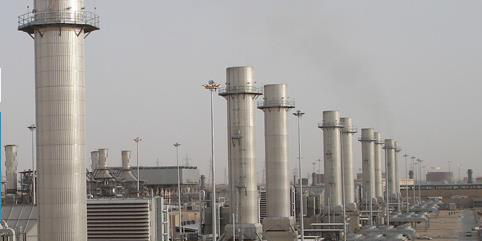
Urban Guardian The Role of City Building Inspectors

Unlocking the Role of Urban Guardians: City Building Inspectors
Embarking on any construction project within a cityscape requires adherence to stringent regulations and standards to ensure safety, functionality, and compliance. City building inspectors play a pivotal role in upholding these standards, serving as guardians of urban development and guardians of public welfare.
Safeguarding Structural Integrity
One of the primary responsibilities of city building inspectors is to safeguard the structural integrity of buildings within their jurisdiction. By conducting thorough inspections at various stages of construction, they ensure that all structural components meet prescribed standards and regulations. From foundation to roof, their meticulous scrutiny helps prevent structural failures and mitigates risks to public safety.
Ensuring Code Compliance
Building codes serve as the backbone of urban development, dictating minimum requirements for design, construction, and occupancy. City building inspectors are tasked with enforcing these codes rigorously, verifying that buildings comply with zoning regulations, fire safety codes, accessibility standards, and environmental ordinances. Their adherence to code compliance promotes uniformity, consistency, and accountability in urban development.
Promoting Fire Safety
Fire safety is a paramount concern in densely populated urban areas, where the risk of fire-related incidents is heightened. City building inspectors play a crucial role in promoting fire safety by assessing buildings for fire-resistant construction materials, adequate egress routes, and functional fire suppression systems. Their proactive measures help minimize fire hazards and enhance the overall resilience of urban infrastructure.
Facilitating Permitting Processes
Navigating the permitting process can be a daunting task for developers, architects, and contractors. City building inspectors serve as liaisons between regulatory agencies and stakeholders, guiding them through the permitting process and ensuring compliance with all requisite permits and approvals. Their expertise streamlines bureaucratic procedures, expedites project timelines, and fosters a collaborative environment for urban development.
Protecting Public Health
The built environment has a profound impact on public health, influencing air quality, sanitation, and overall well-being. City building inspectors play a vital role in safeguarding public health by enforcing regulations related to plumbing, ventilation, and sanitation systems. By ensuring that buildings provide a safe and healthy environment for occupants, they contribute to the overall quality of life within urban communities.
Mitigating Environmental Impact
As stewards of urban development, city building inspectors are mindful of the environmental impact of construction activities. They enforce regulations aimed at minimizing pollution, conserving natural resources, and promoting sustainable building practices. By advocating for green building initiatives and monitoring compliance with environmental standards, they help mitigate the ecological footprint of urban development and foster a more sustainable future.
Fostering Community Engagement
Effective urban development requires active engagement with local communities and stakeholders. City building inspectors serve as ambassadors of municipal governance, engaging with residents, neighborhood associations, and advocacy groups to address concerns and solicit feedback. Their transparent communication and community outreach efforts promote trust, collaboration, and inclusivity in the decision-making process.
Embracing Technological Innovation
In an increasingly digital world, city building inspectors leverage advanced technologies to enhance their inspection processes and improve efficiency. From mobile inspection apps to building information


 If you’re an employer and your staff are engaged in any work activities that may represent any level of danger to their health or safety, you’re required, under UK law, to provide adequate PPE. PPE stands for Personal Protective Equipment and is given to members of your workforce in order to protect them from potential harm where other measures are not able to negate these possible risks.
If you’re an employer and your staff are engaged in any work activities that may represent any level of danger to their health or safety, you’re required, under UK law, to provide adequate PPE. PPE stands for Personal Protective Equipment and is given to members of your workforce in order to protect them from potential harm where other measures are not able to negate these possible risks. Choosing the right industrial apparel is vital for implementing an effective personal protective equipment program that will both meet OSHA compliance standards while keeping workers safe on the job. OSHA regulates the use and selection of personal protective industrial equipment and offers a comprehensive guide for every category of hazards and numerous specific applications, with more rules being added as new hazards are identified. The government draws on numerous standards from practical experience and other safety organizations, such as the National Institute of Occupational Safety and Health (NIOSH), in order to produce working rules for employer safety.
Choosing the right industrial apparel is vital for implementing an effective personal protective equipment program that will both meet OSHA compliance standards while keeping workers safe on the job. OSHA regulates the use and selection of personal protective industrial equipment and offers a comprehensive guide for every category of hazards and numerous specific applications, with more rules being added as new hazards are identified. The government draws on numerous standards from practical experience and other safety organizations, such as the National Institute of Occupational Safety and Health (NIOSH), in order to produce working rules for employer safety. Choosing the right industrial apparel is vital for implementing an effective personal protective equipment program that will both meet OSHA compliance standards while keeping workers safe on the job. OSHA regulates the use and selection of personal protective industrial equipment and offers a comprehensive guide for every category of hazards and numerous specific applications, with more rules being added as new hazards are identified. The government draws on numerous standards from practical experience and other safety organizations, such as the National Institute of Occupational Safety and Health (NIOSH), in order to produce working rules for employer safety.
Choosing the right industrial apparel is vital for implementing an effective personal protective equipment program that will both meet OSHA compliance standards while keeping workers safe on the job. OSHA regulates the use and selection of personal protective industrial equipment and offers a comprehensive guide for every category of hazards and numerous specific applications, with more rules being added as new hazards are identified. The government draws on numerous standards from practical experience and other safety organizations, such as the National Institute of Occupational Safety and Health (NIOSH), in order to produce working rules for employer safety. As safety regulations and standards have improved over the years, employers have been more effective at supplying the proper safety equipment needed by employees to protect themselves. Similarly, employees have developed better habits with regards to wearing and using the proper safety equipment in their daily work routine. On occasion, this progression towards higher safety standards has surfaced the question of who should pay for the safety supplies. Historically, many OSHA standards and regulations required that the employer provide the employees with protective equipment when such equipment was necessary to protect employees from job-related injuries or illnesses. These requirements included the standard safety products such as hard hats, safety glasses, gloves, respiratory protection, protective clothing, and fall protection equipment. However, some of these provisions did not make it clear that the employer should pay for the cost of providing all safety items.
As safety regulations and standards have improved over the years, employers have been more effective at supplying the proper safety equipment needed by employees to protect themselves. Similarly, employees have developed better habits with regards to wearing and using the proper safety equipment in their daily work routine. On occasion, this progression towards higher safety standards has surfaced the question of who should pay for the safety supplies. Historically, many OSHA standards and regulations required that the employer provide the employees with protective equipment when such equipment was necessary to protect employees from job-related injuries or illnesses. These requirements included the standard safety products such as hard hats, safety glasses, gloves, respiratory protection, protective clothing, and fall protection equipment. However, some of these provisions did not make it clear that the employer should pay for the cost of providing all safety items.